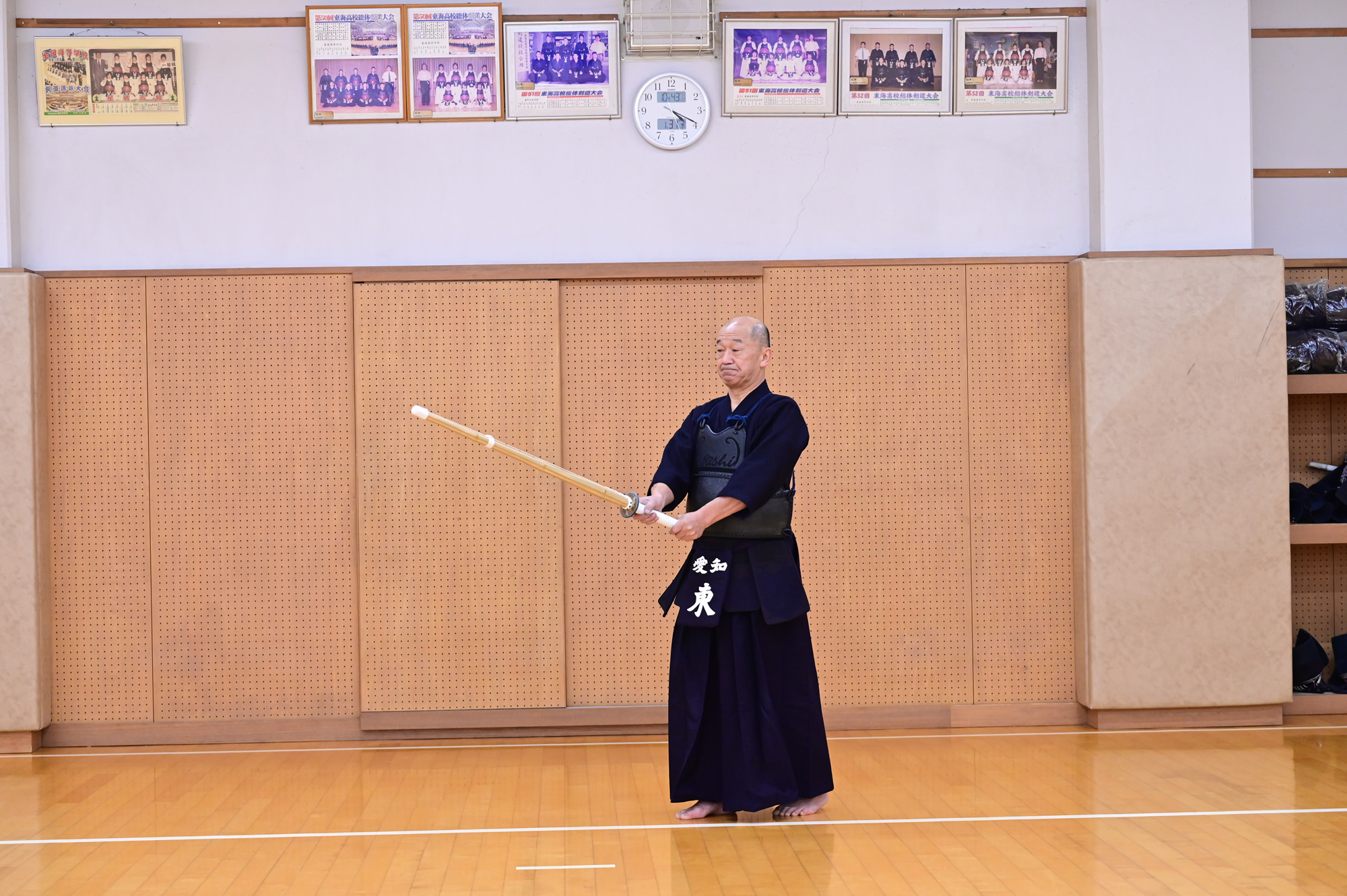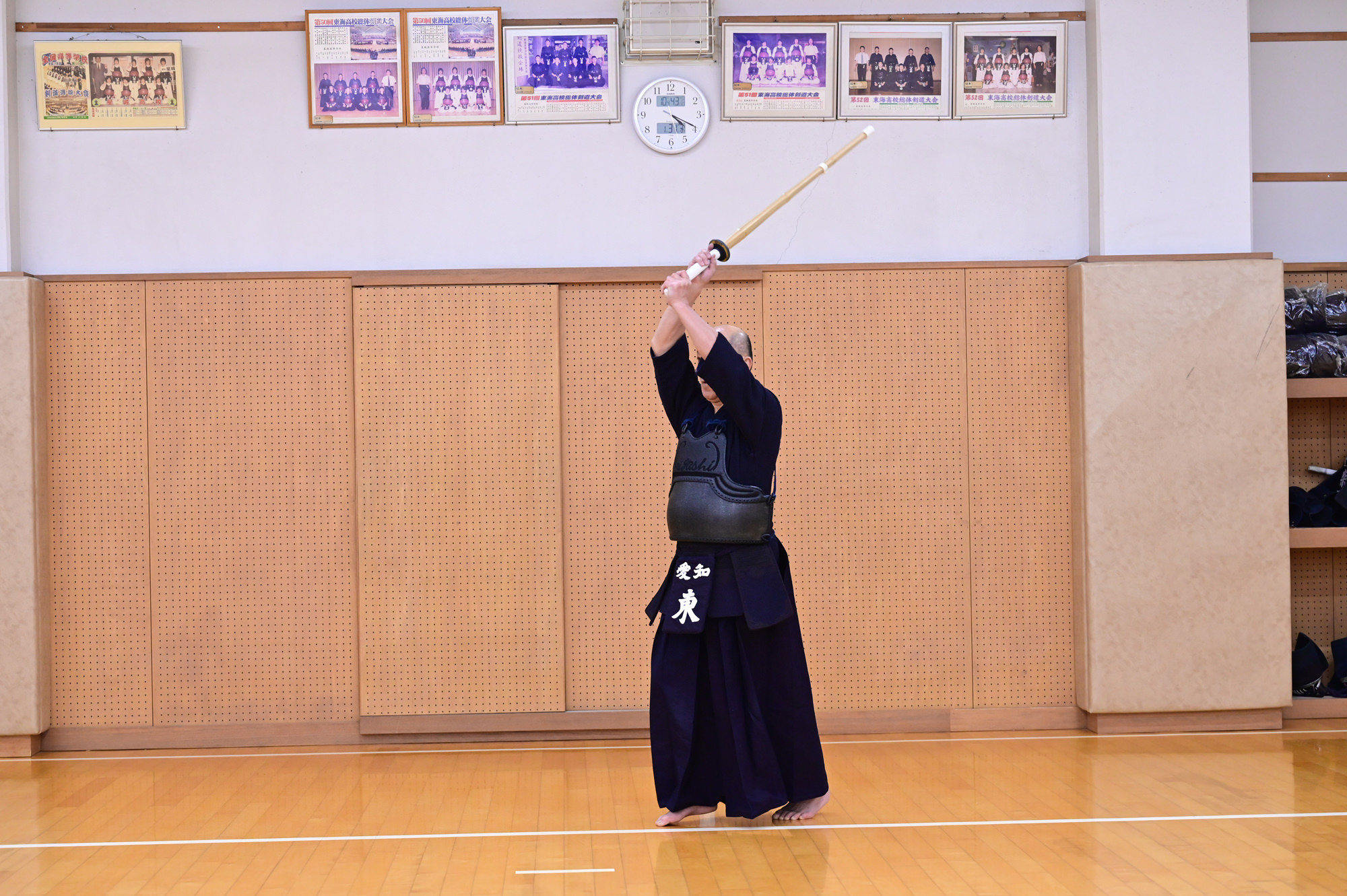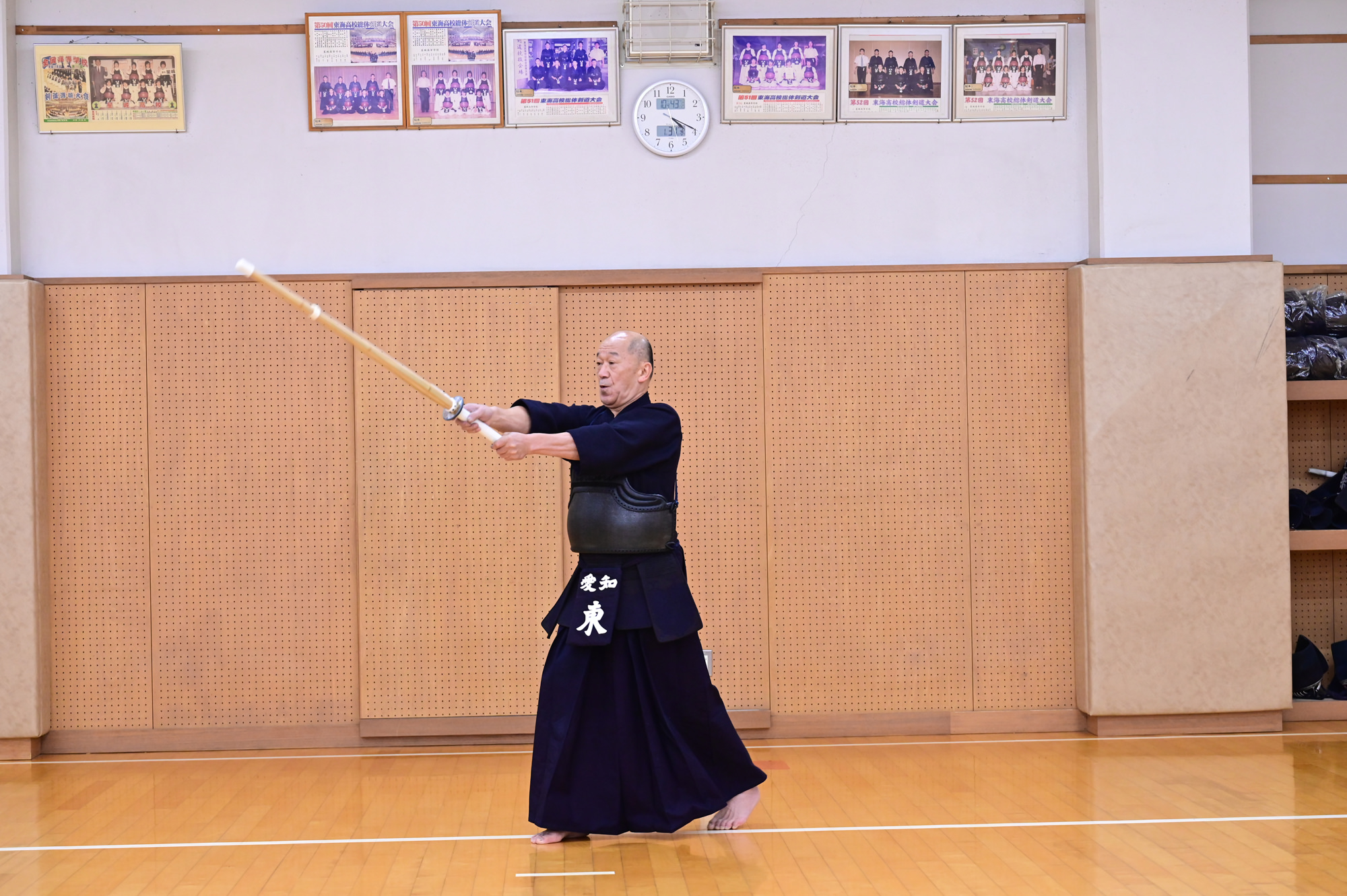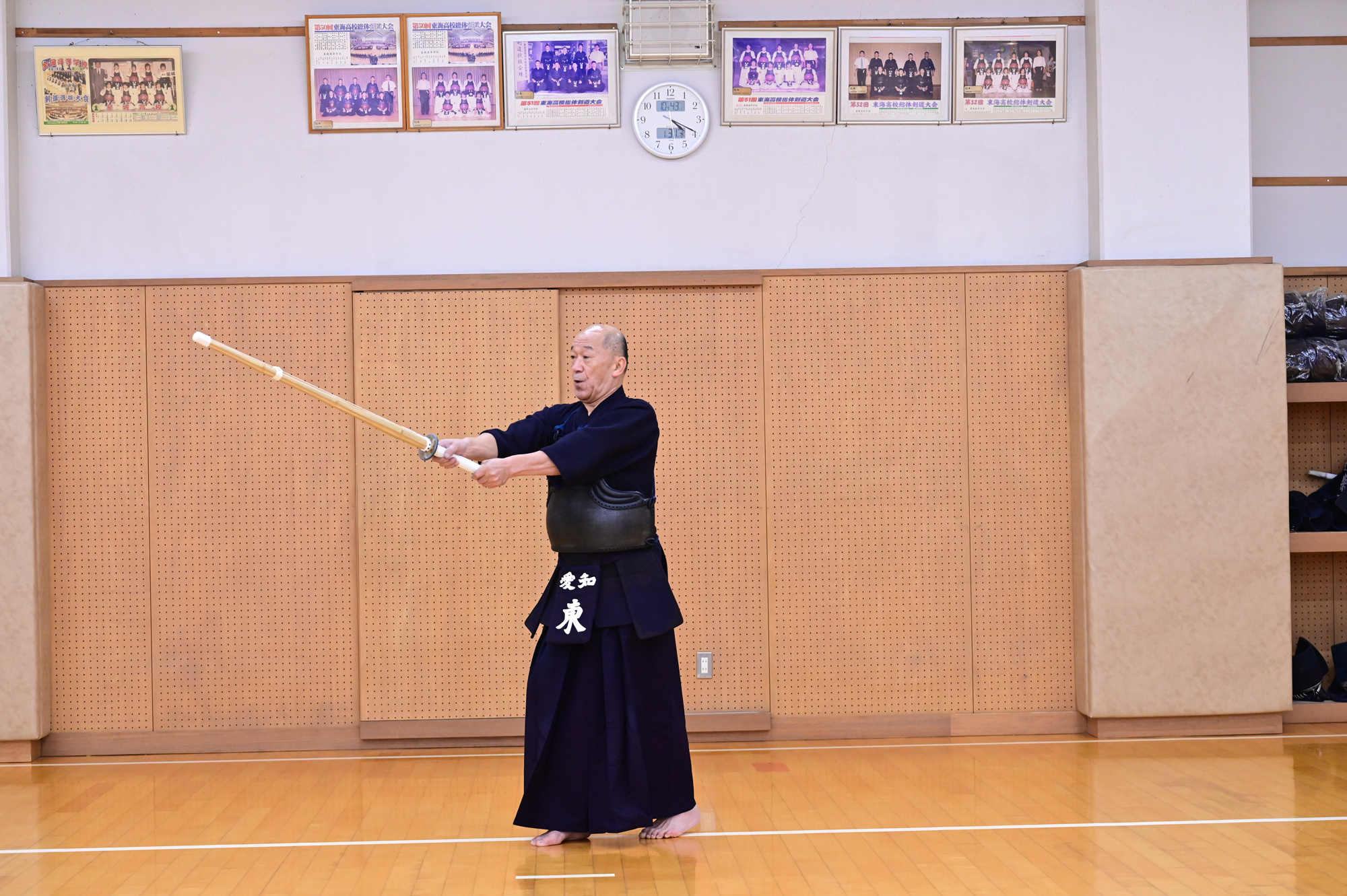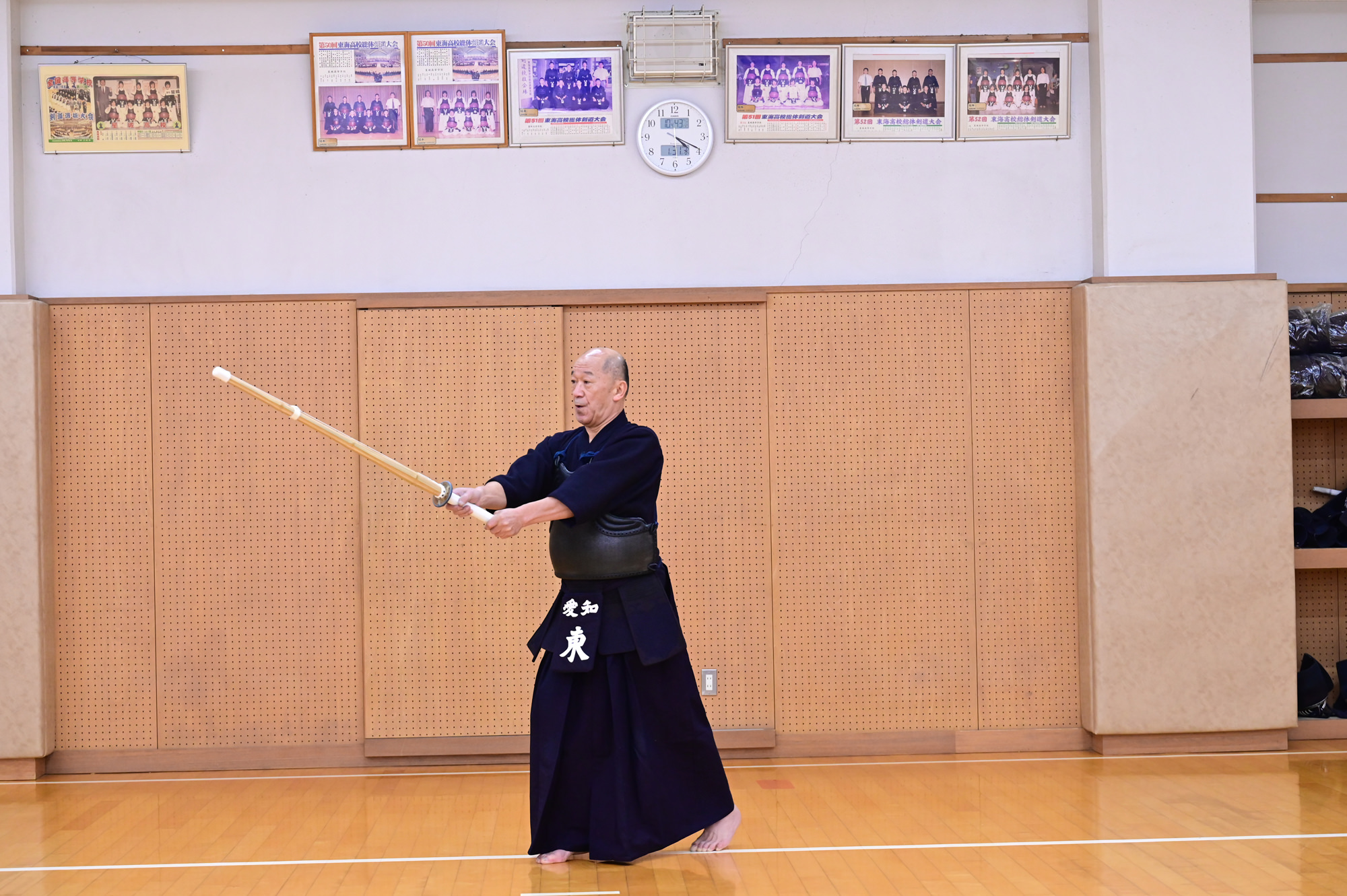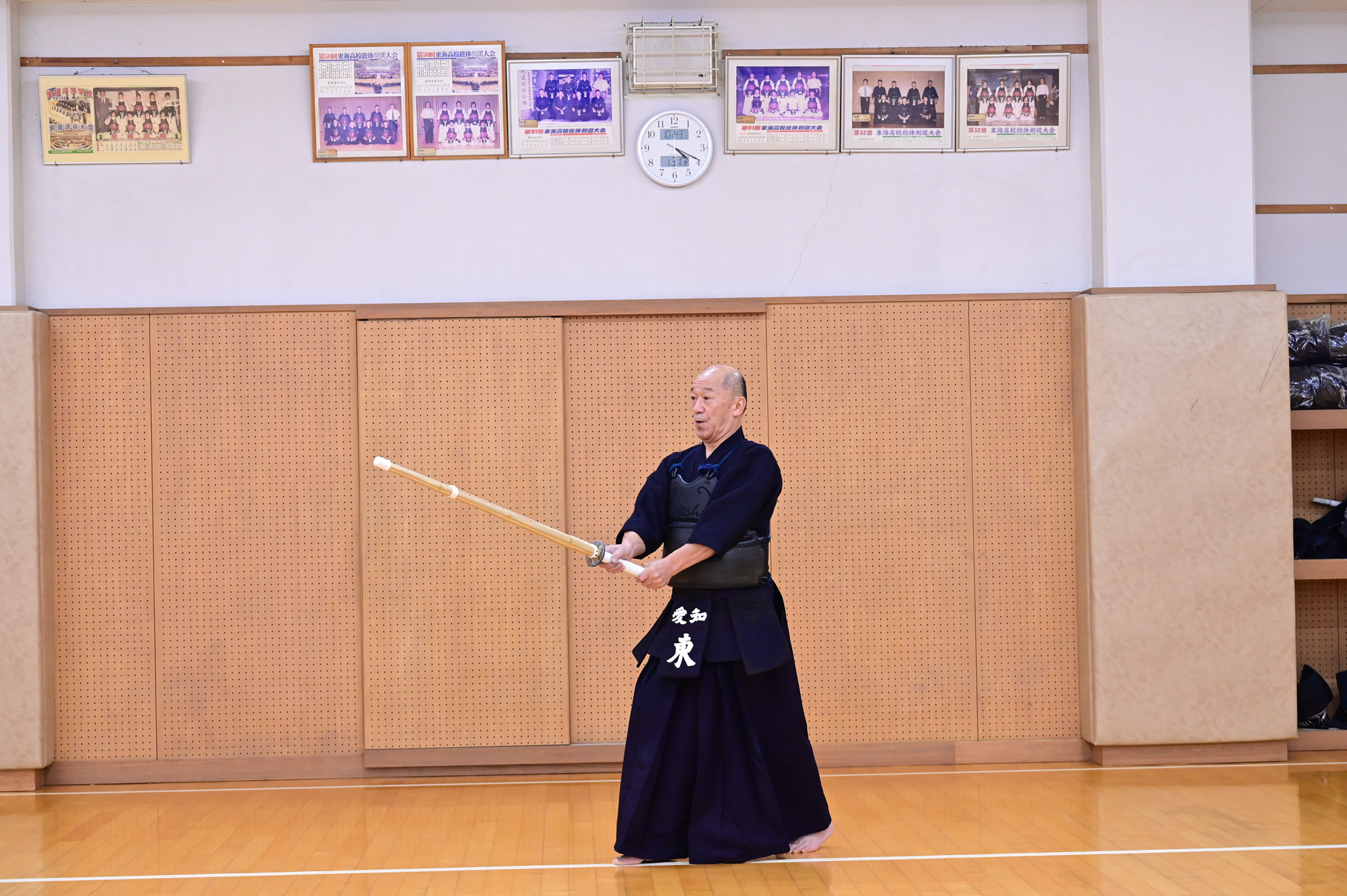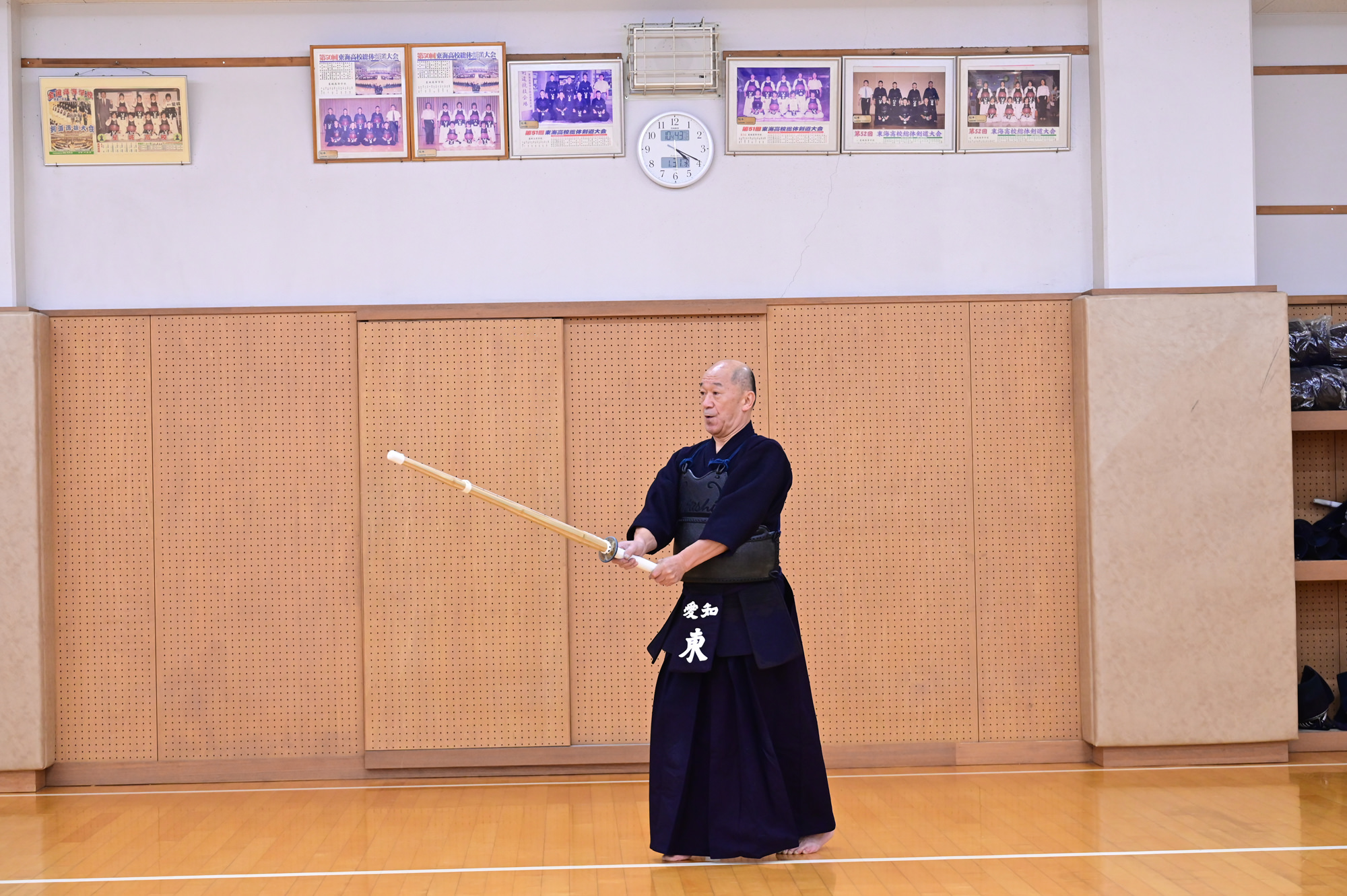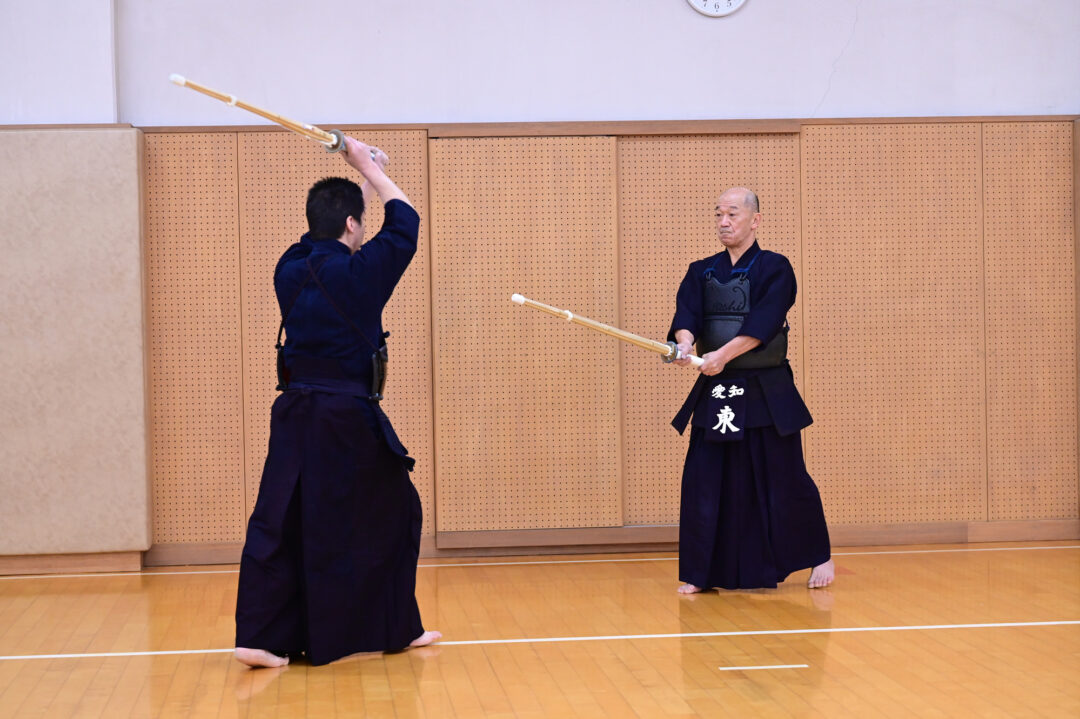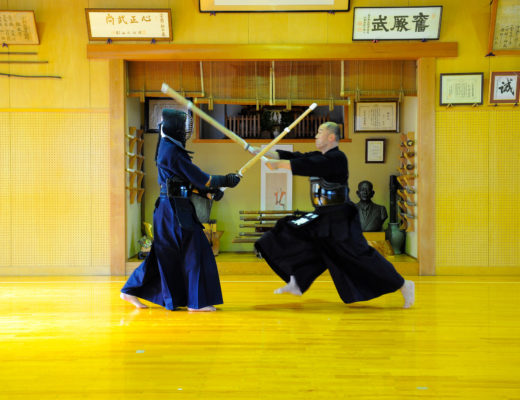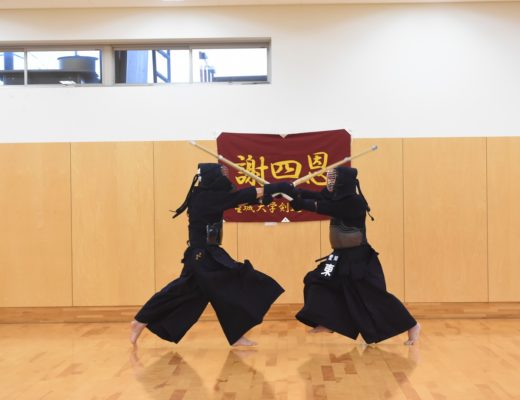2024.4 KENDOJIDAI
Translation: Pepijn Boomgaard
“Kendo is about attacking, not defending. It’s important to always have the spirit of facing your opponent head-on.” These are the words of Higashi Yoshimi. In order to break down your opponent while constantly pushing them, it is important to exert pressure from a Kamae that uses the left side of the body and proactively create striking opportunities.
Higashi Yoshimi (Hanshi 8th Dan)
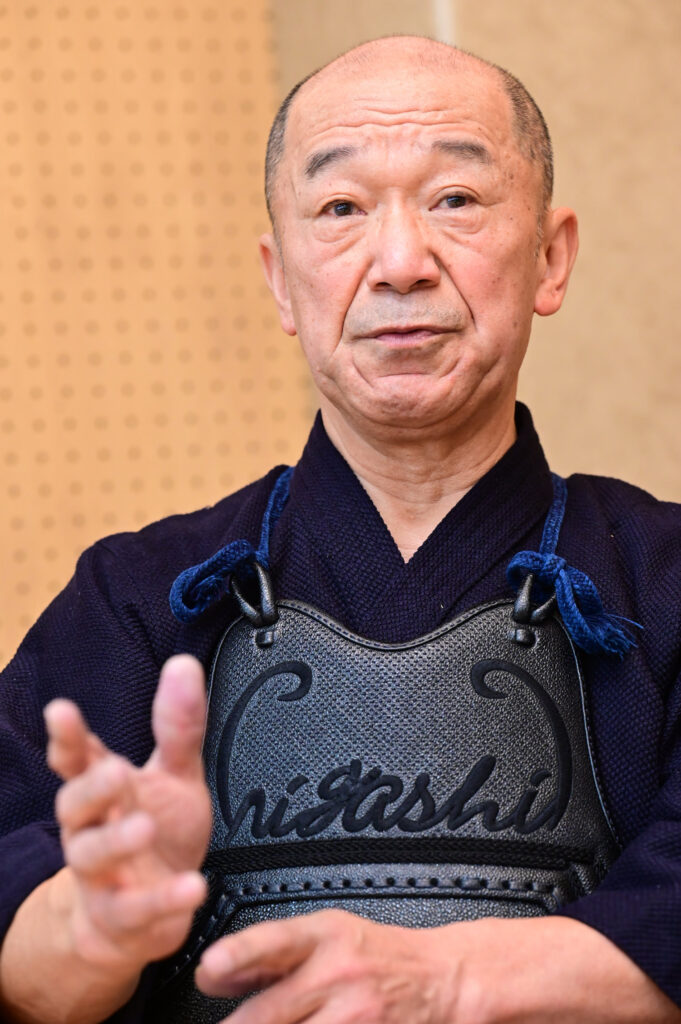
If you’ve been practicing Kendo for a while, you’ve probably been told that “you are not taking the initiative” or “you are waiting.” As your Kendo improves, it becomes important to fight your opponent with invisible Ki and Seme. These elements are difficult to implement. However, they are very clear to a spectator watching your fight. This might be why Dan examinations are so difficult.
I am currently teaching at the Kendo clubs of Seijoh University, Seijoh High School, and Nagoya Toyopet. I tell my students to always face their opponent with a strong spirit. However, a strong spirit can only be acquired through practice.
In Kendo, a good strike cannot be made unless you confront your opponent, gain the upper hand and break them down, and seize the opportunity to strike. This is where the underlying principle, or Riai, of Kendo lies. This Riai varies according to the level of a practitioner, and it is important that instructors have their students practice with this in mind.
To give an example, in order to strike Men, it is necessary to make the opponent lower or open their Kensen. Rather than waiting for your opponent to lower or open their Kensen, you have to actively pressure them and respond instantly to these opportunities. It is important to teach this principle according to the level of your students.
To proactively use Seme, you need a solid Kamae and be ready to strike at any moment. The most important parts of Kamae are the left hand, the left hip, and the left foot. Try to keep this Kamae as much as possible. The word “Kamae” is often associated with a static state, but it would be meaningless if your Kamae is not stable when you are in motion as well.
If your Kamae is stable and dynamic, it fosters a feeling of authority and forward movement. This is where the opportunity to “win and strike” appears. This opportunity is not only created through a strong Kiai. You can also use your Kensen to move forward or lure in your opponent.
In the Textbook for AJKF Kendo Seminar, published by the All Japan Kendo Federation, it is written that when advancing, retreating, or separating from their opponent, in order to take the advantage, students should always be aware of the distance of a single step or a half step. This is exactly what is required of practitioners of 6th Dan and higher.
There are an infinite number of ways of taking the advantage, and everyone has to devise their own way of mastering it. The only way to learn this is by practicing with your teachers and seniors, and by observing strong practitioners. I will introduce what I pay attention to when practicing.
Applying the teachings of the Kendo Kata to Shinai practice
The Kendo Kata are a good way to learn about initiative. The first, second, third, and fifth Tachi Kata are said to contain Sen Sen No Sen. The fourth, sixth, and seventh Tachi Kata contain Go No Sen.
All of the Uchidachi’s techniques are performed after they see an opportunity. The Textbook for AJKF Kendo Seminar states that an opportunity appears when there is an indication at the moment there is a change in your opponent’s mind, body, or techniques. In reality, you need to actively create this indication yourself.
In Kata, Uchidachi has the role of teacher, and Shidachi follows their lead. Shidachi learns how to “win by striking” by striking after Uchidachi completes their attack.
As a result, Shidachi is the last person to move in Kendo Kata. However, they always need to have the spirit of taking the advantage. I believe that this is something that can also be applied to Shinai Kendo. It teaches us that we need to have a proactive mindset when using both Shikake-waza and Oji-waza.
Also, in Kendo Kata, whenever we move one foot, we also move the other foot with it. This is the principle of Ashi-sabaki, but during a match, the distance between both feet sometimes becomes too large. Pulling in the left foot also leads to Seme.
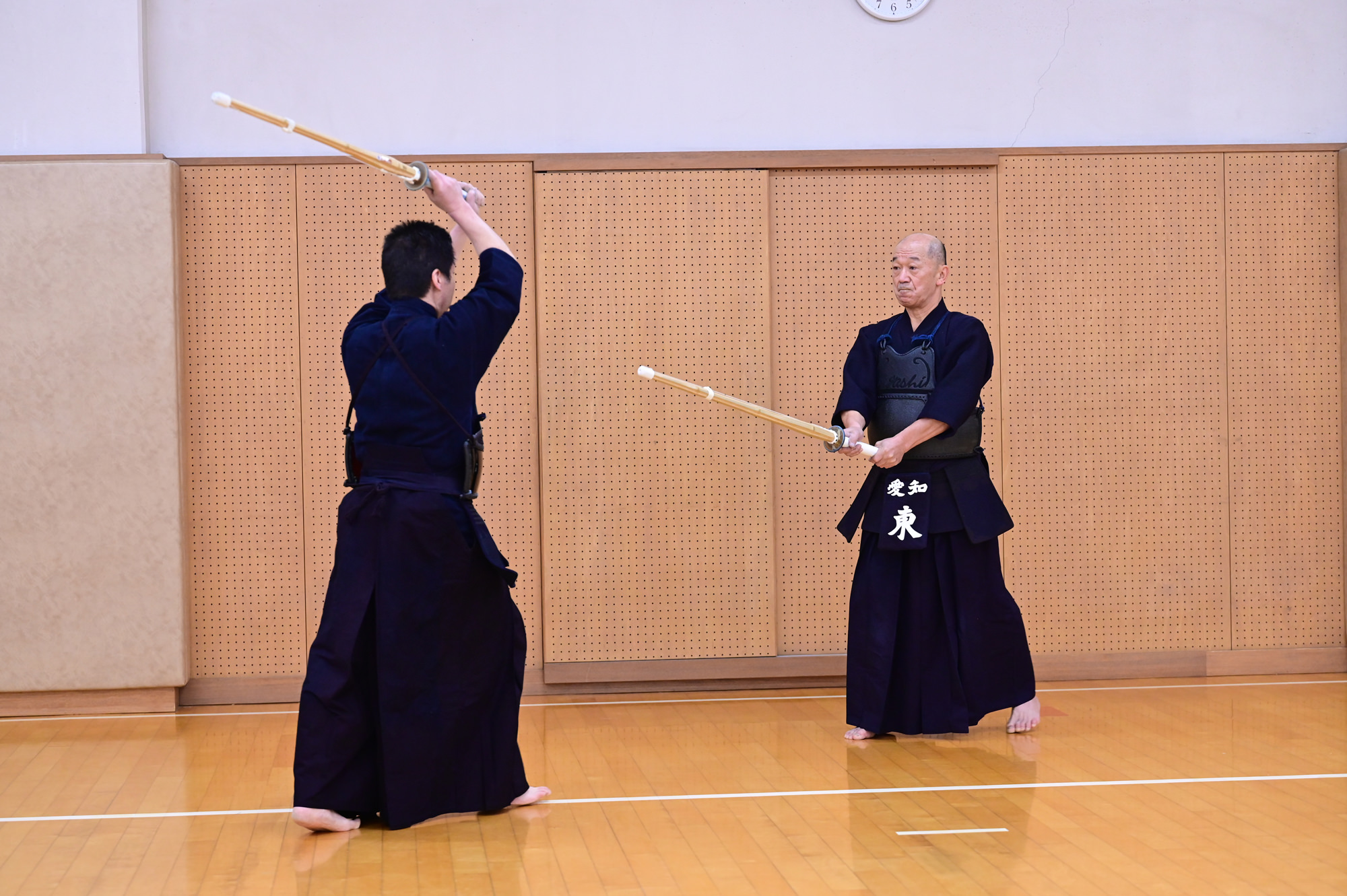
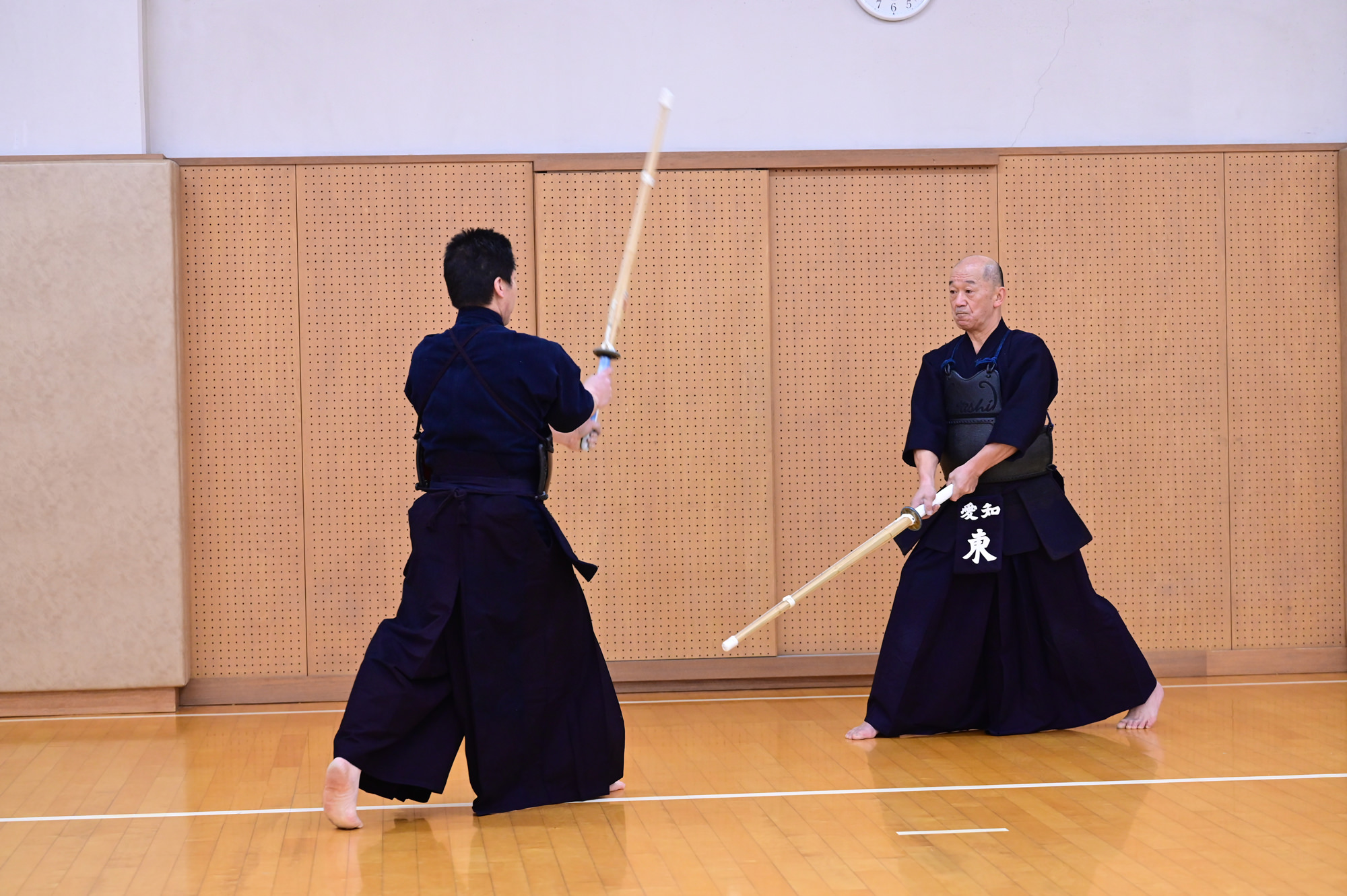
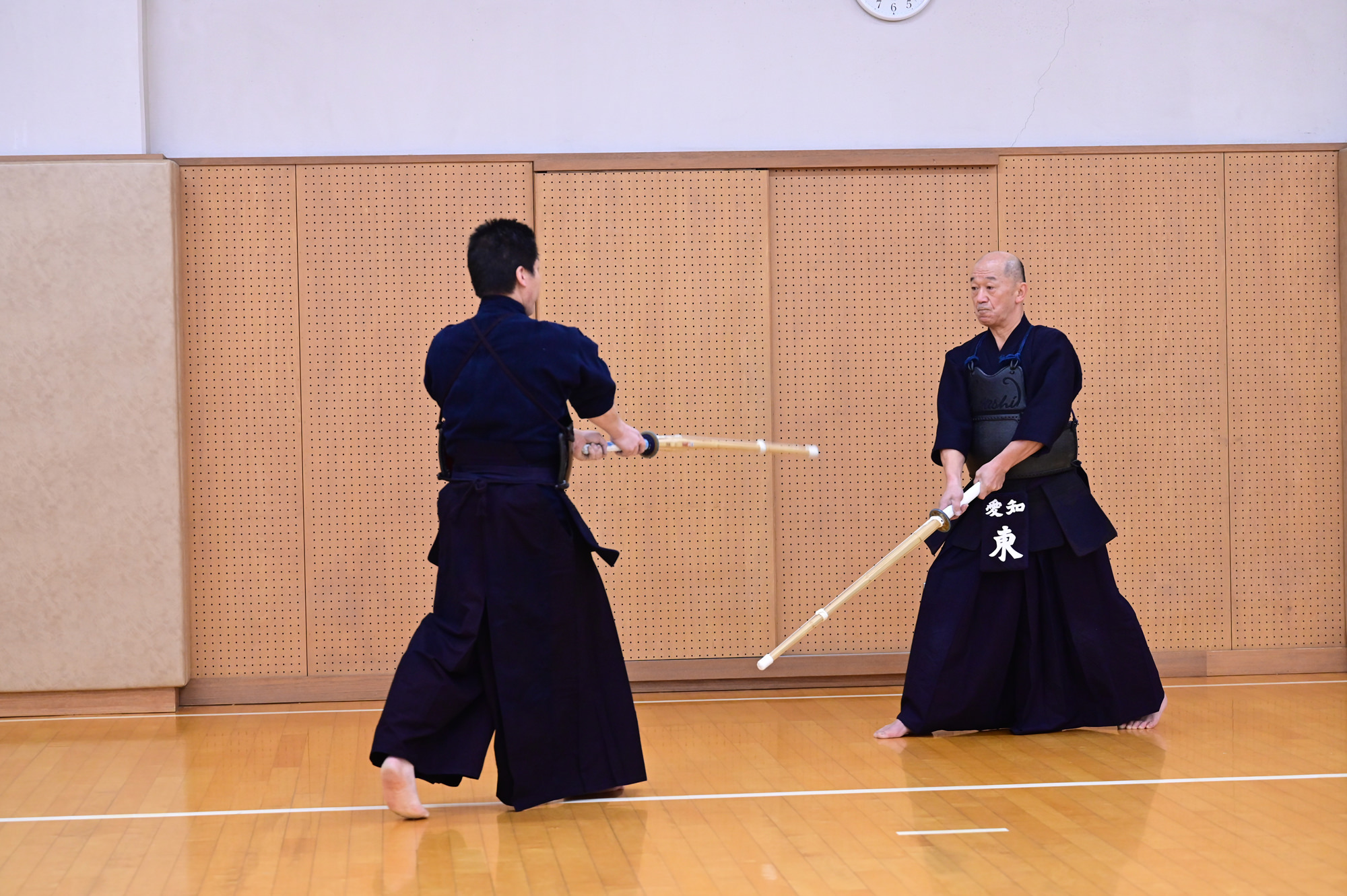
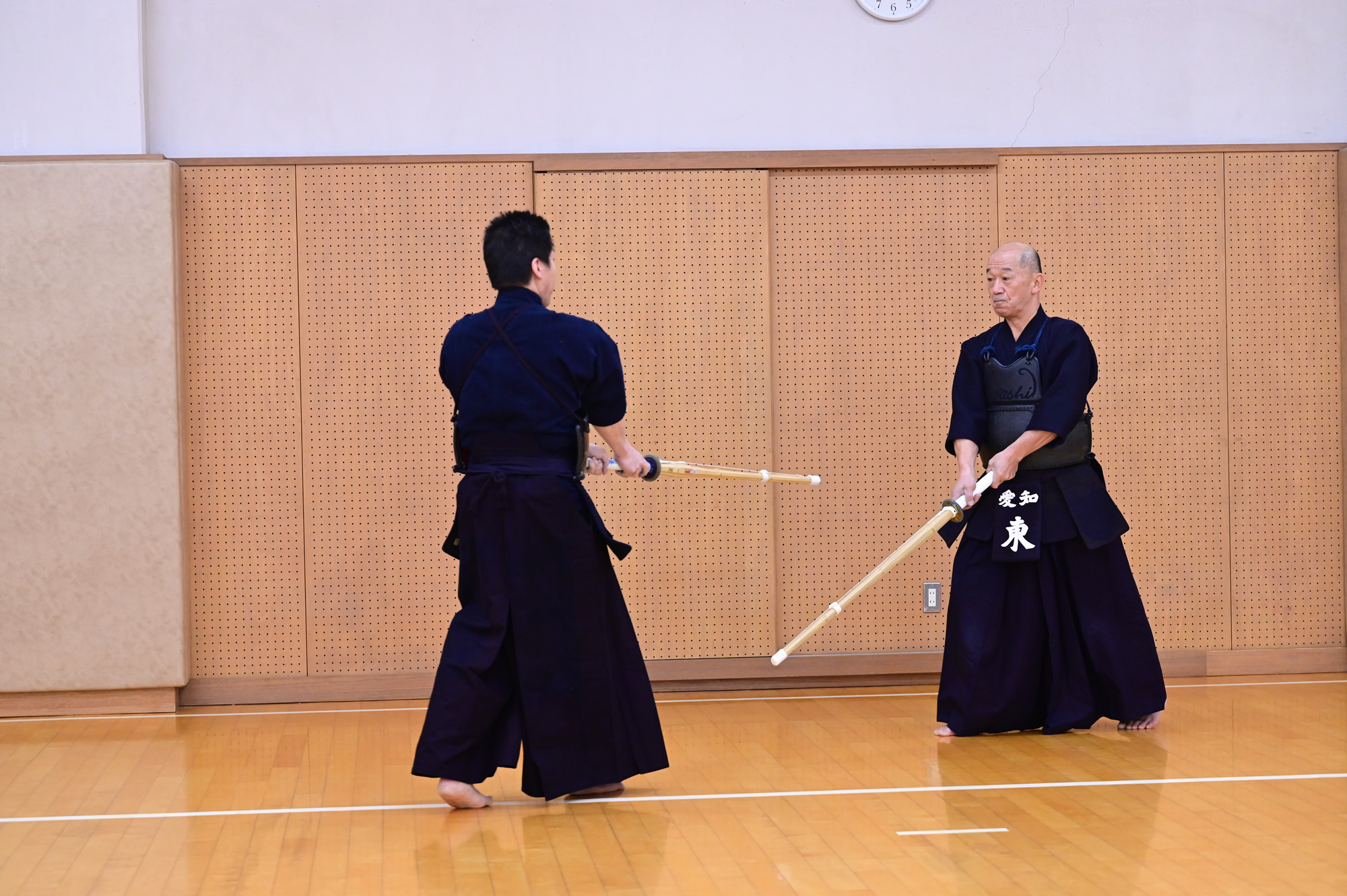
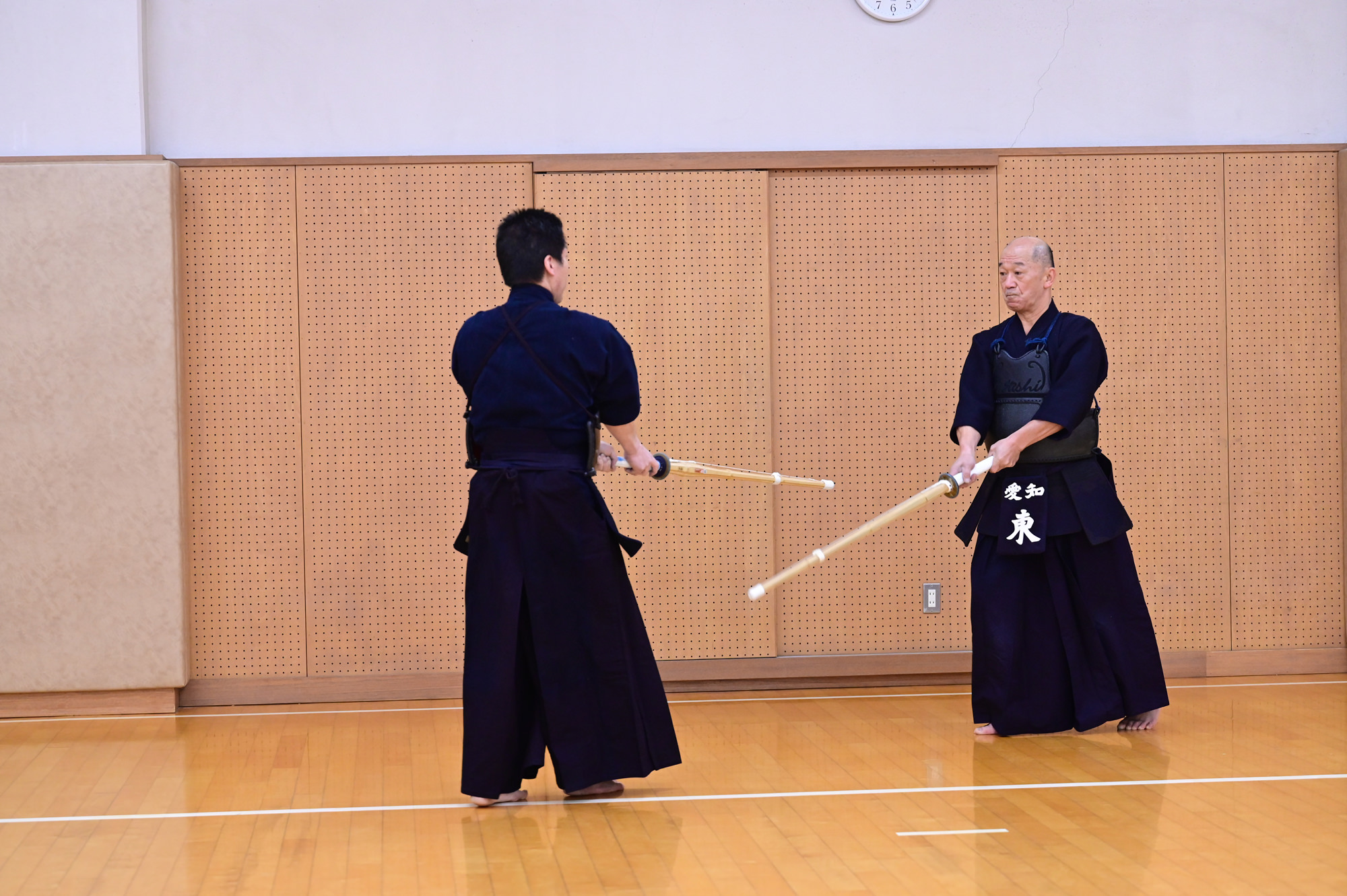
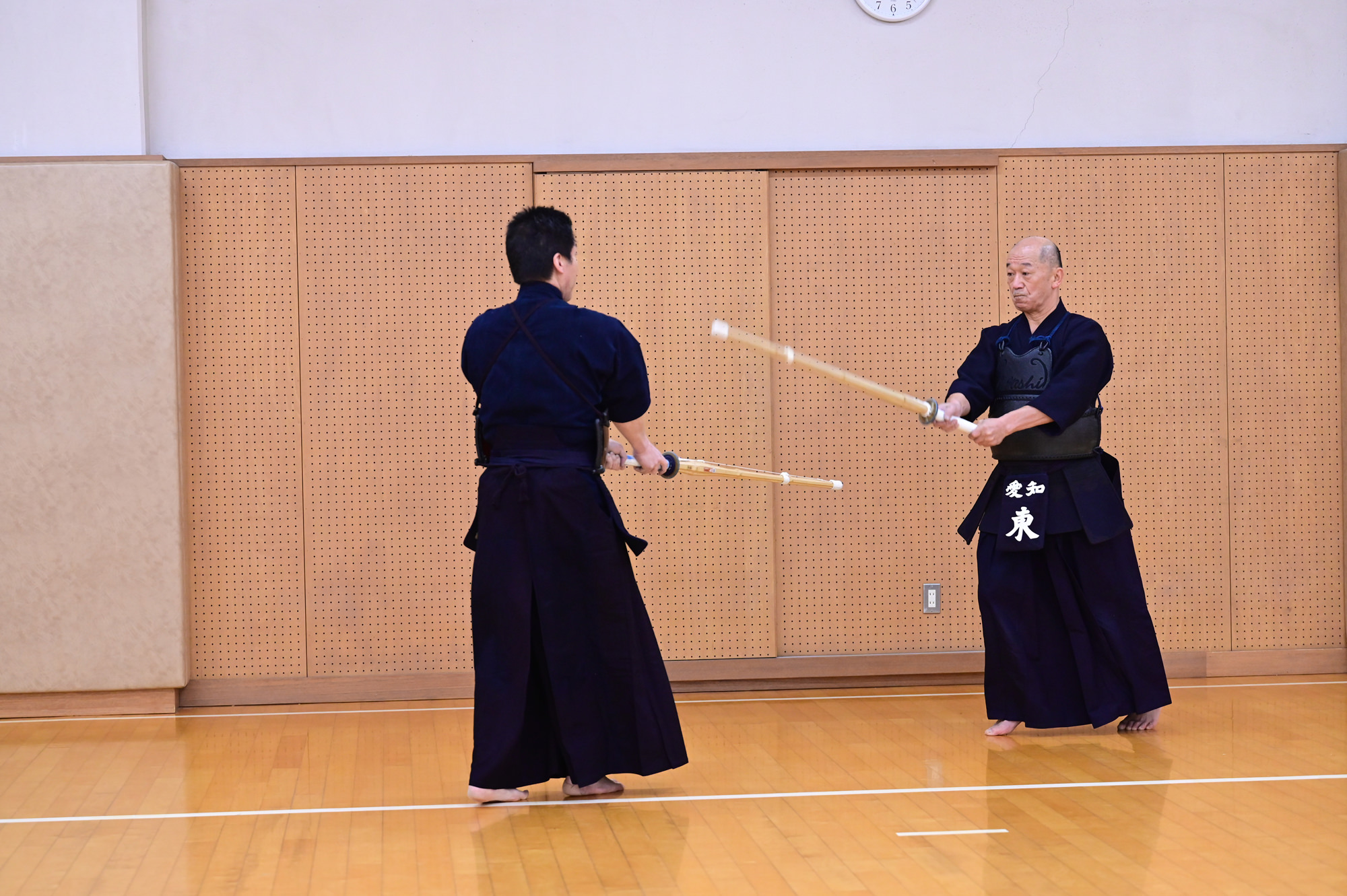
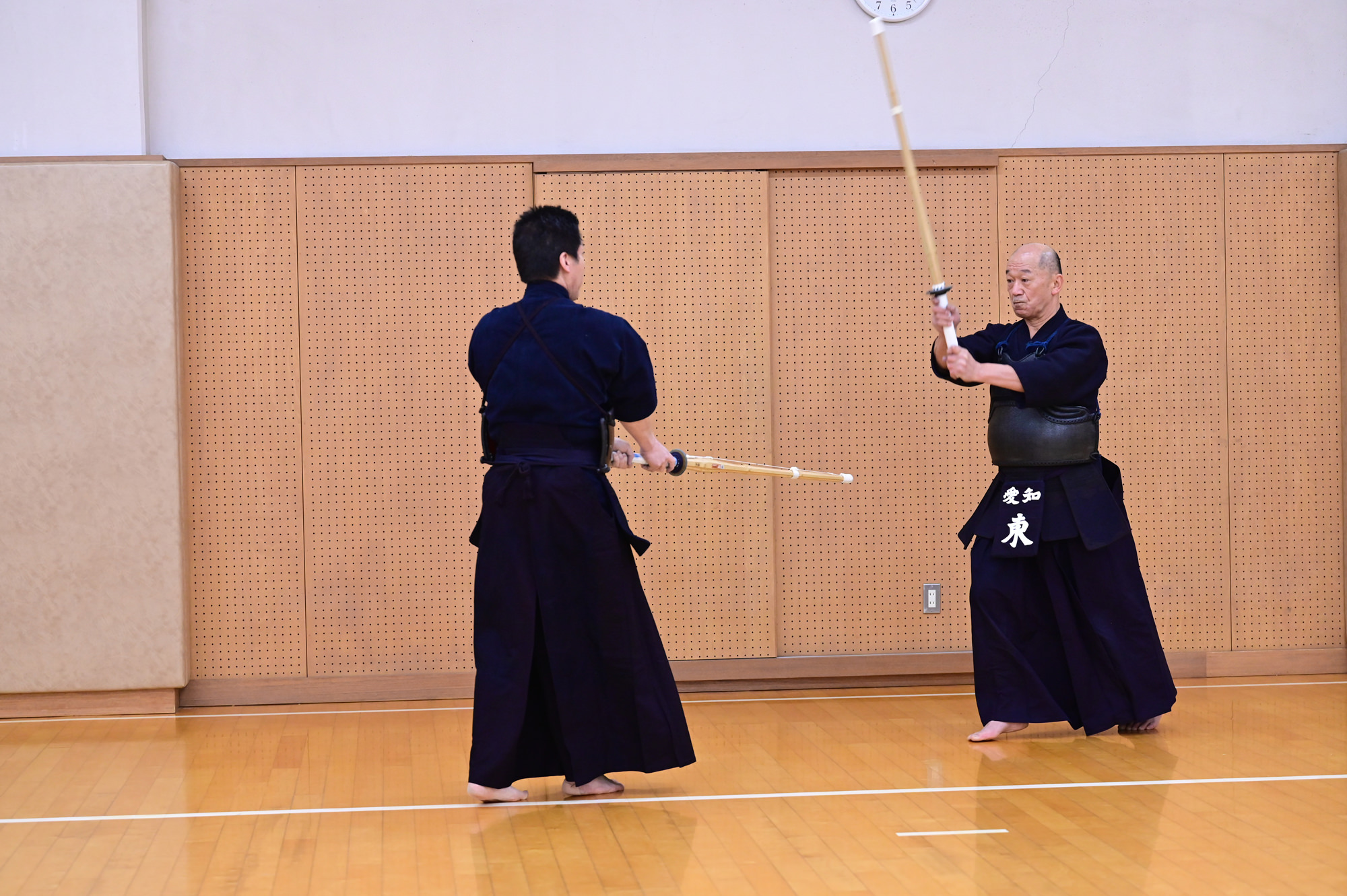
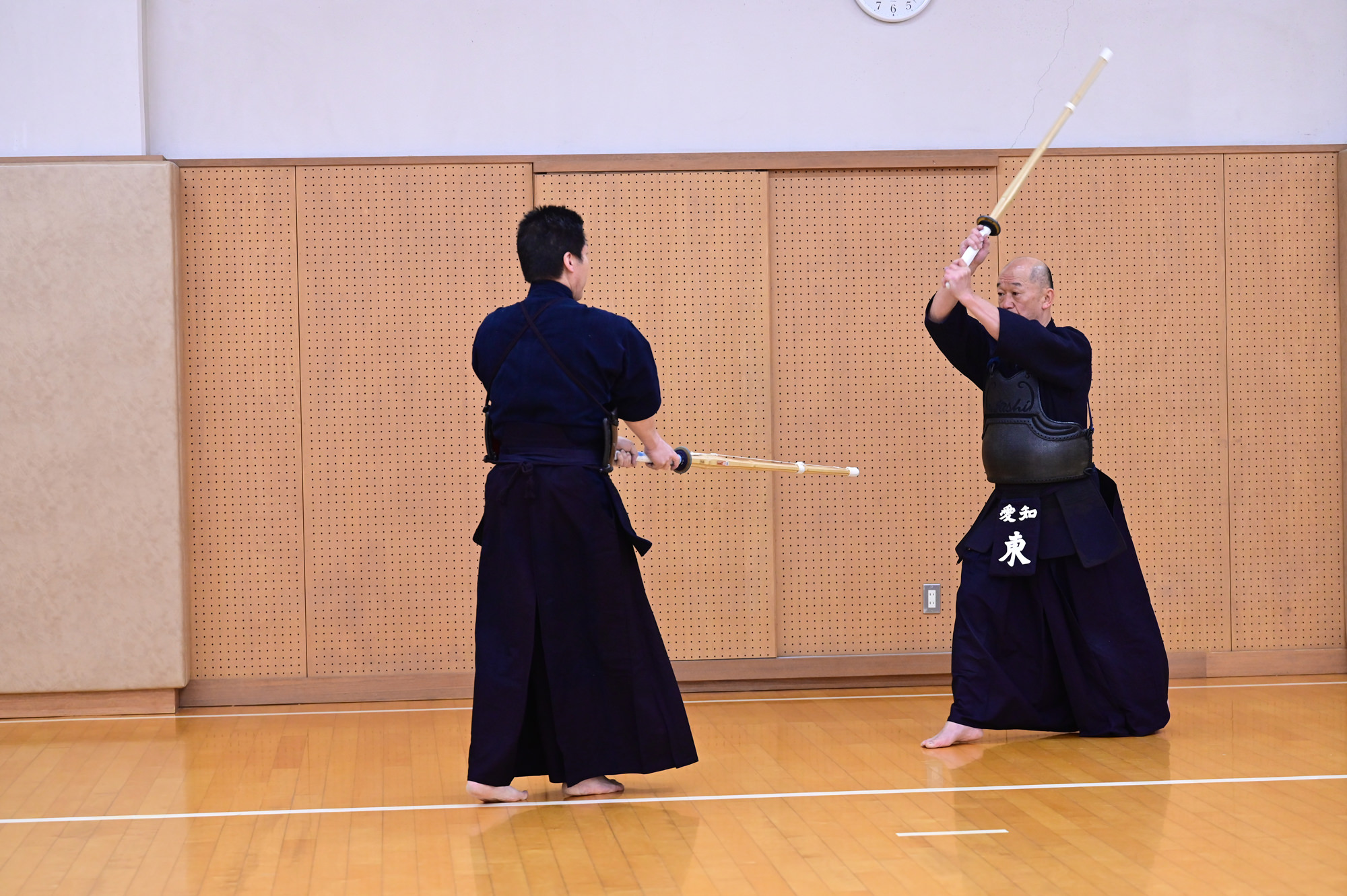
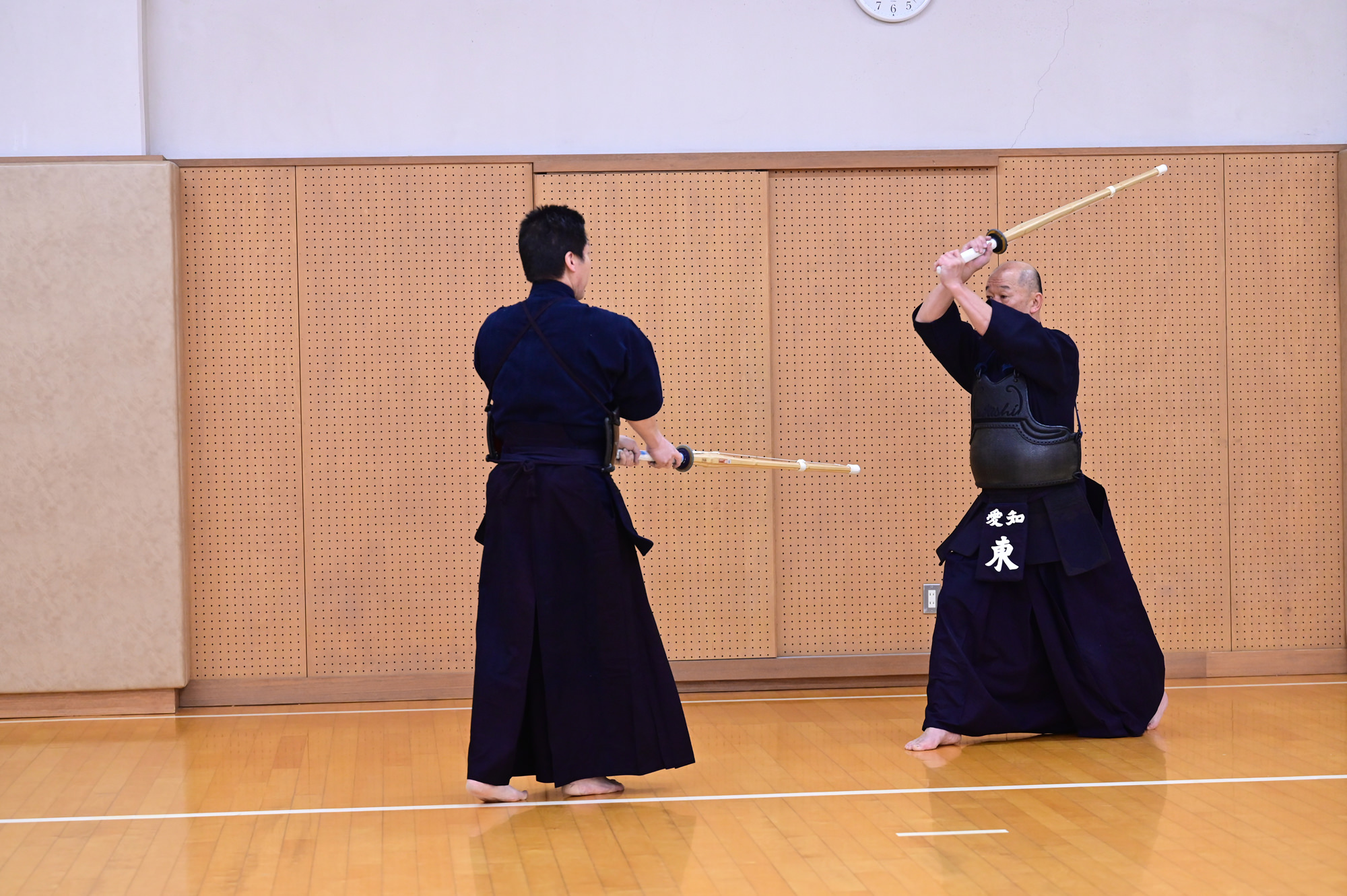
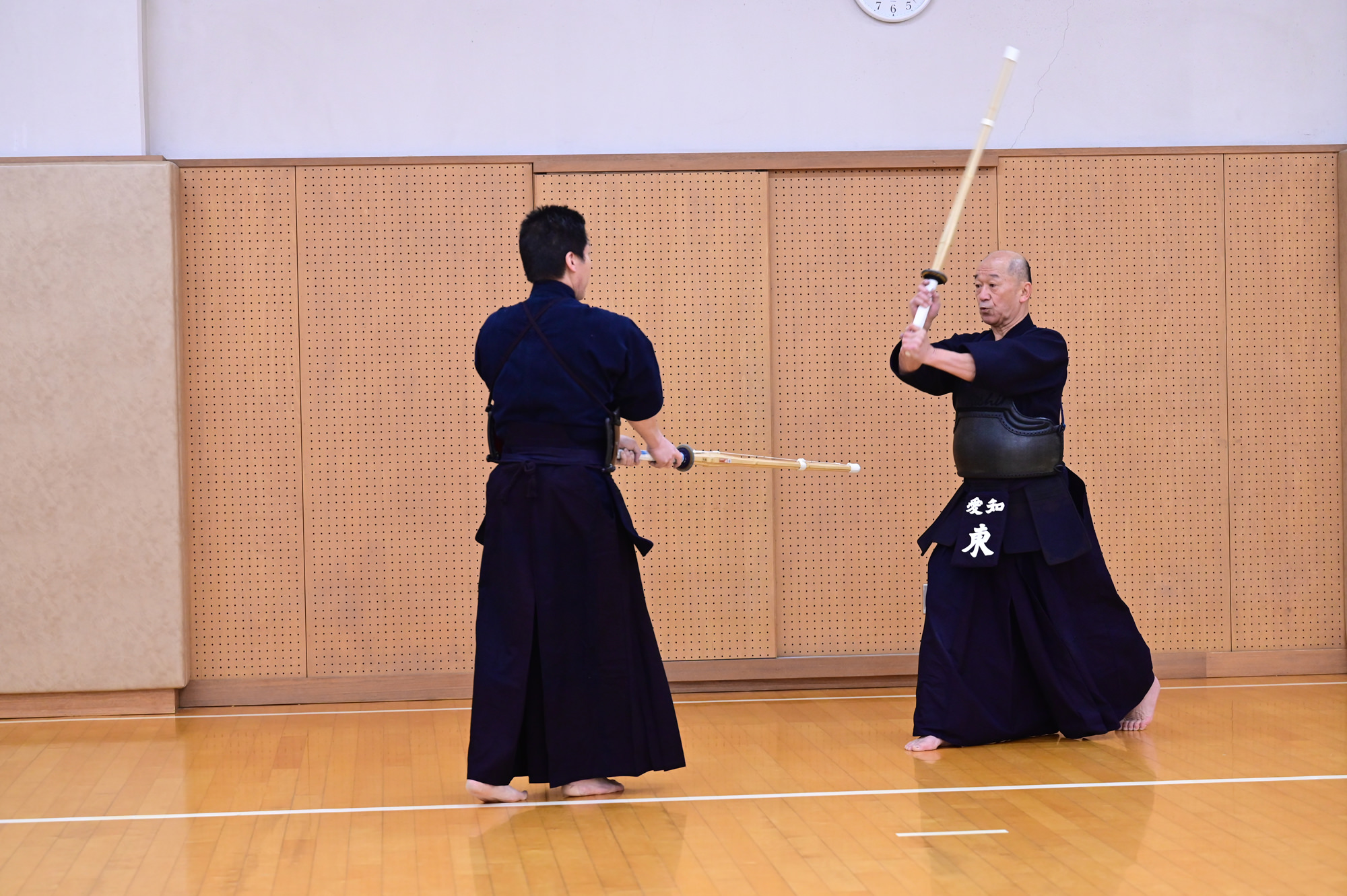

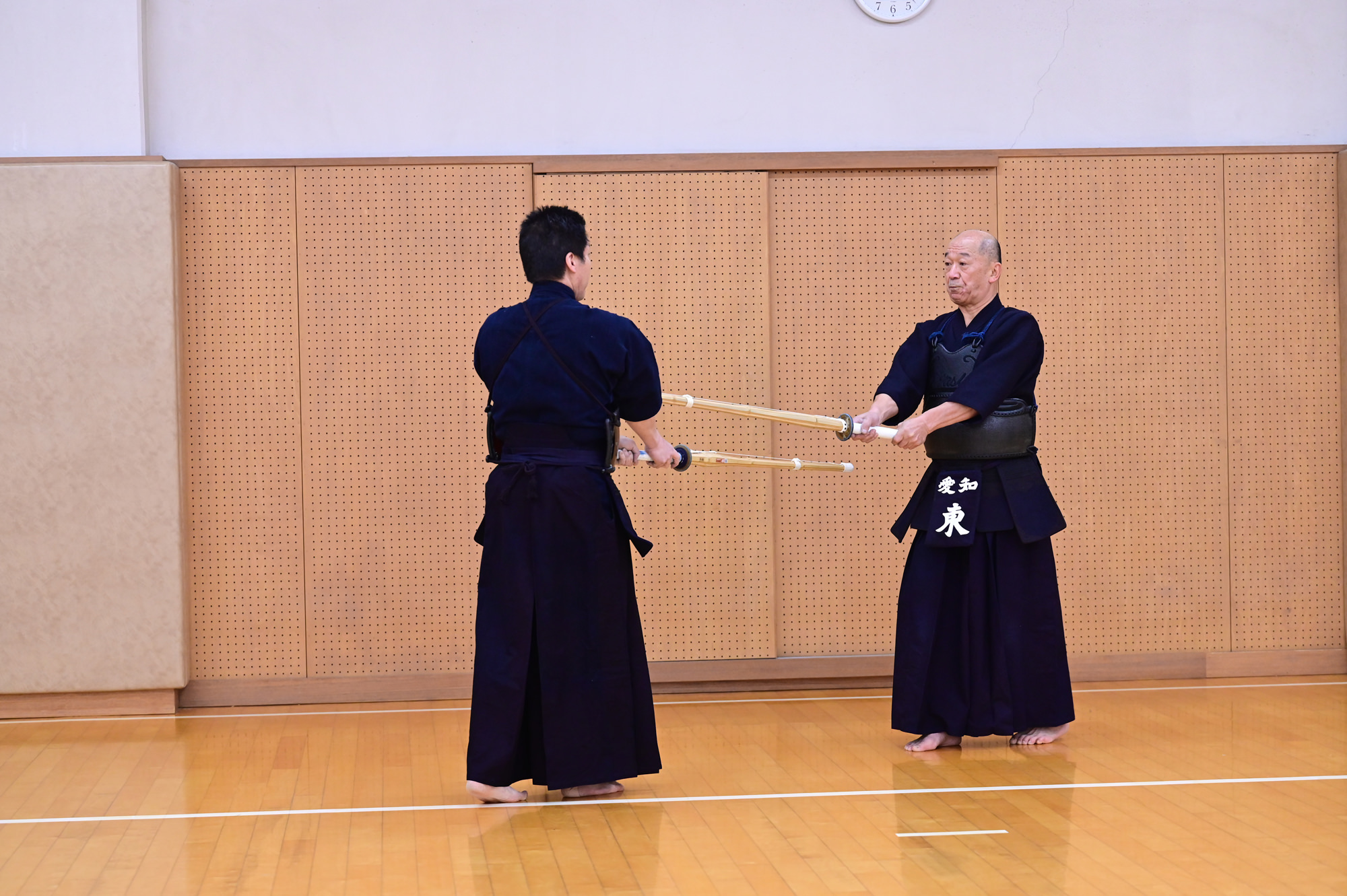
Measure the distance between you and your opponent with your left foot. Know your own Uchi-ma
When practicing techniques, I always try to exert pressure by taking a single step. In a real match, you need to have already won by the time you get into Issoku Itto No Maai. I believe that by paying attention to this even during technique practice will help you with taking the initiative.
Issoku Itto No Maai changes depending on one’s height and physical strength. It is the distance at which you can strike without compromising your posture. Out of the four targets, Men is the furthest. In order to reach it, you have to be closer than you think.
In a real match, there is a fight that decides whether you strike or get struck. There is also a psychological aspect to it, similar to the saying “the Maai is close for me, but far for my opponent.” In a real fight, the psychological element is a major factor. If you lose the psychological fight, your limbs and your shoulder will become tense, and you won’t be able to freely move your sword and your footwork will stagnate.
Therefore, it is important to train how to advance without tensing up during Kihon practice. Stepping forward is not the only way to apply Seme, you can also enter from a slight angle, or from the Ura-side. If you are not in Aiki with the Motodachi when training this, your practice will not be fruitful. It is important to be serious and act as if you are in a real match.
Practicing seizing the target with initiative
I have been given the opportunity to teach at Sugiyama Jinshinkan Dojo in Nagoya. Some of the students there are over 60, and the majority of the practice is devoted to training Shikake-waza.
As people get older, it becomes more difficult for them to initiate their own attacks. Of course, it is impossible for them to perform dynamic Shikake-waza such as those seen at the All Japan Championship. However, through practice it becomes possible to enter one’s Uchima, and perform techniques without strain when the opportunity arises.
The ideal is to pressure and draw out the opponent and strike Debana.
Debana-waza is not limited to only Men. If you enter Uchima and your opponent raises their arms, you can also strike Kote. Furthermore, if your opponent rushes to strike Men, you can react with Kaeshi-do or Suriage-men. The most important thing is to practice with a sense of tension, as if you are in a real fight.
I also make Kakarite take one step forward before performing their technique. Motodachi takes on the role of teacher, and by matching our Ki, we can foster an invisible exchange of spirits.
Okuri-ashi is the basis of Kendo. Learn correct movement through Suburi
In order to take the initiative and create striking opportunities, you have to win through Seme. This is easier said than done. In a real match, you might be so nervous that you are not able to use what you have learned. Kendo is all about how much you practice, but for general practitioners time is limited, so it is important to have an image of what you want to achieve in mind as you practice.
Form is essential in Kendo. You have to use your body correctly, hold your Shinai correctly, and swing correctly. There are many ways to learn these things, but Suburi is an effective way to do so. You don’t need a partner to do Suburi, so you can do it by yourself. You may wonder what I’m talking about, but as you keep doing it, you will learn how to use your body and Tenouchi.
Apply what you have learned through Suburi to Kirikaeshi and Uchikomi, and then to real matches. Kendo has been a repetition of this process since the olden times. I also continue practicing the basics in order to get closer to my ideal Kendo.
